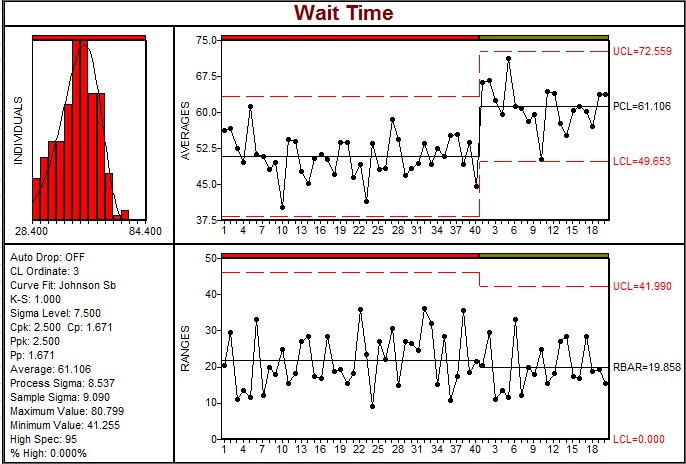Tools
Concepts
Interpretation & Calculations
Histograms, Process Capability
Applications
Key Success Factors for the Implementation of SPC
How to Study Process Capability
SPC to Improve Quality, Reduce Cost
Use Of SPC To Detect Process Manipulation
Responding to Special Causes
An excerpt from SPC DeMYSTiFieD (2011 McGraw-Hill) by Paul Keller
When special causes of variation are detected, determine (in process terms) the cause of the process shift. Similarly, when processes are improved, such as resulting from the efforts of Six Sigma project teams, the control chart should provide evidence of a special cause resulting from that change. For this reason, Six Sigma teams always use statistical control charts in the Measure stage of the Define-Measure-Analyze-Improve-Control (DMAIC) methodology to first baseline the existing process, then again in the Control stage to verify the process improvement. For example, if the Six Sigma team had revised the method of customer service by routing clients to more experienced personnel in an attempt to reduce service times, the control chart in the Control stage should indicate that current service times are identified as a special cause (below the lower control limit or a run test violation) relative to the control limits established during the Measure stage. This special cause would be indicative of an actual sustained improvement in service time resulting from the process change. If special causes are not detected between the pre-project Measure stage data and the post-project Control stage data, the project would be presumed to have little or no effect on improving service time.
Once special causes are identified, the total process
variation can be reduced by proper action:
Chapter 7 includes a number of techniques to aid in this investigation, including the use of designed experiments and multivariate regression analysis to understand the significance and relative effects of these sources of variation.
When special causes have been identified on a control chart, the statistical control limits and center line should be recalculated to exclude their effect. Since special causes represent a different process distribution than that defined by the common cause level of variation, their numerical impact on the calculation of the common cause centerline and control limits represents a statistical bias in the estimates.
If control limits were calculated manually, this would
obviously be burdensome; however, most practical applications of SPC nowadays are conveniently done using computer software designed for the
purpose. Most credible SPC software allows for convenient remove from analysis right mouse menu features for a selected subgroup on a control
chart. Some even include so-called autodrop features which automatically remove subgroups that are out of control from the calculations.
Sophisticated logic within the automatic subgroup dropping will exclude the data only where bias is present:
These features are most useful for sporadic occurrences of
special cause variation. When special cause variation is persistent, such as resulting from a fundamental change to the process dynamics
(or even a planned change intended to optimize the process), the control limits should be recalculated for the region influenced by the special
cause such as shown previously. (See figure below).
Example SPC control chart in SPC software with stepped regions to accomodate
process shift. See also: Learn more about the SPC principles and tools
for process improvement in Statistical Process Control
Demystified (2011, McGraw-Hill) by Paul Keller,
in his online SPC Concepts short course (only $39), or his
online SPC certification course ($350) or
online Green Belt certification course ($499).




